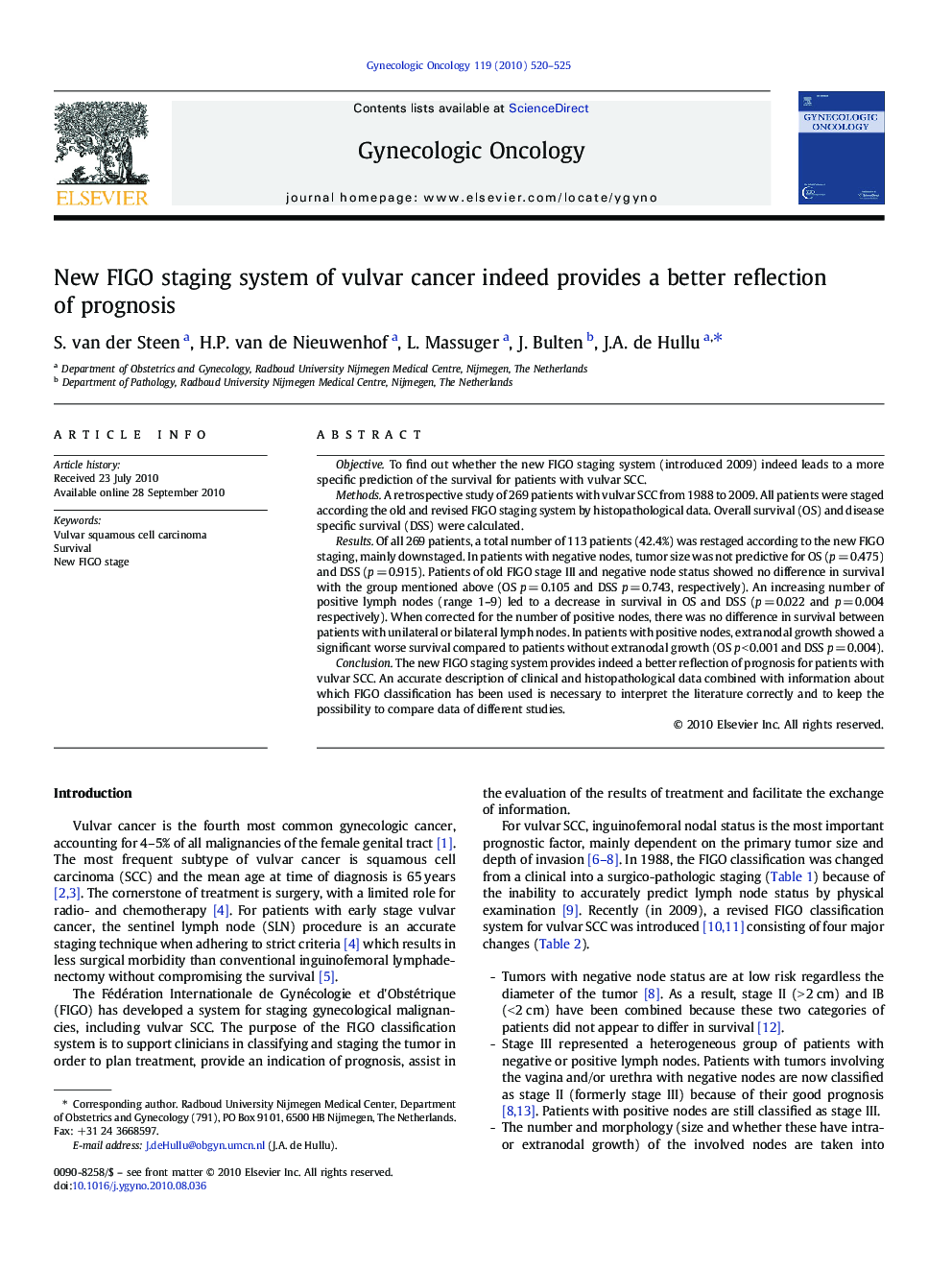| Article ID | Journal | Published Year | Pages | File Type |
|---|---|---|---|---|
| 3944035 | Gynecologic Oncology | 2010 | 6 Pages |
ObjectiveTo find out whether the new FIGO staging system (introduced 2009) indeed leads to a more specific prediction of the survival for patients with vulvar SCC.MethodsA retrospective study of 269 patients with vulvar SCC from 1988 to 2009. All patients were staged according the old and revised FIGO staging system by histopathological data. Overall survival (OS) and disease specific survival (DSS) were calculated.ResultsOf all 269 patients, a total number of 113 patients (42.4%) was restaged according to the new FIGO staging, mainly downstaged. In patients with negative nodes, tumor size was not predictive for OS (p = 0.475) and DSS (p = 0.915). Patients of old FIGO stage III and negative node status showed no difference in survival with the group mentioned above (OS p = 0.105 and DSS p = 0.743, respectively). An increasing number of positive lymph nodes (range 1–9) led to a decrease in survival in OS and DSS (p = 0.022 and p = 0.004 respectively). When corrected for the number of positive nodes, there was no difference in survival between patients with unilateral or bilateral lymph nodes. In patients with positive nodes, extranodal growth showed a significant worse survival compared to patients without extranodal growth (OS p < 0.001 and DSS p = 0.004).ConclusionThe new FIGO staging system provides indeed a better reflection of prognosis for patients with vulvar SCC. An accurate description of clinical and histopathological data combined with information about which FIGO classification has been used is necessary to interpret the literature correctly and to keep the possibility to compare data of different studies.
